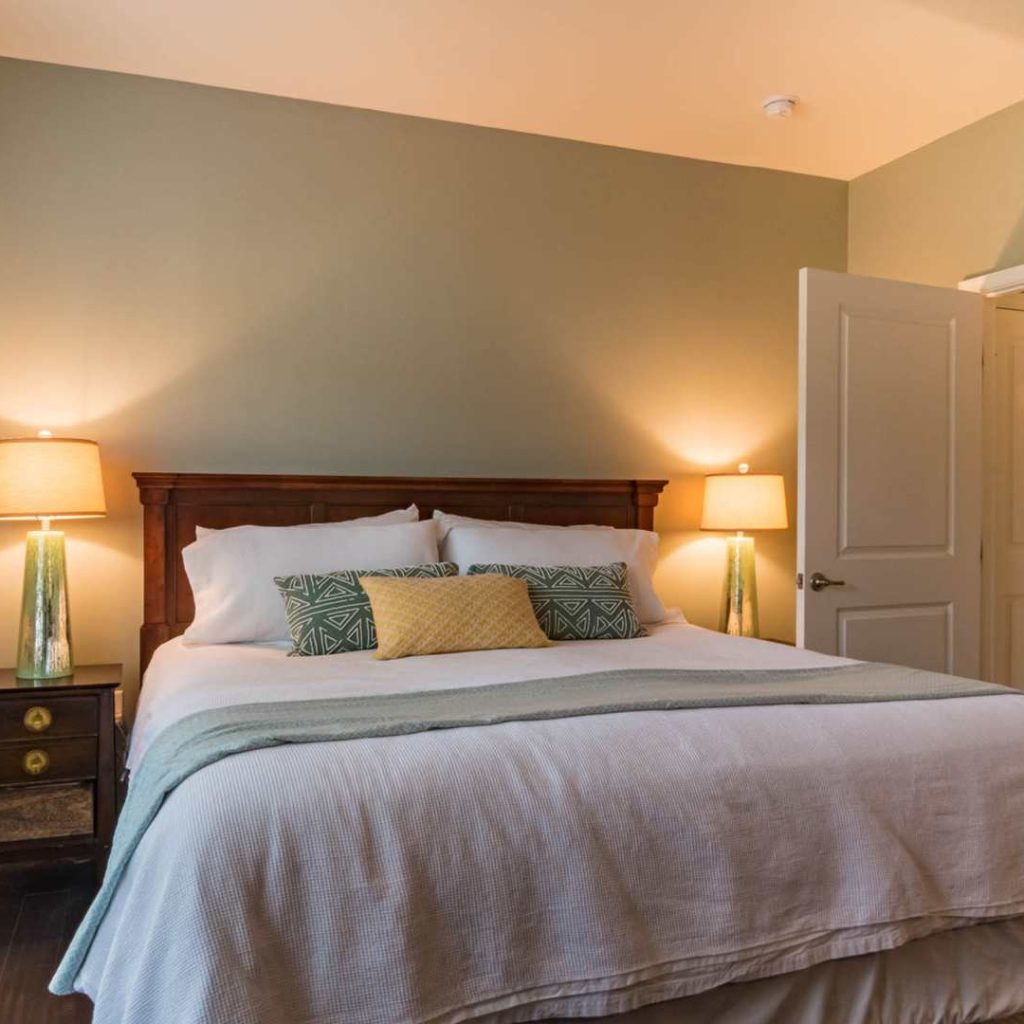
Finding the Ideal Bed Position
The ideal position for your bed is with the head end along a solid wall, preferably an interior wall. By avoiding exterior walls and windows,
you can minimise unwanted draughts, temperature fluctuations, and street noise.
Which Way Should Your Bed Face?
Ultimately, this is a personal preference, as each bedroom and home layout is different, but it is advised to
face your bed with the head end along an interior wall.
Bedroom Feng Shui Bed Placement
A traditional feng shui bed position recommends placing your bed in a “commanding” position where you can easily
see your bedroom door while in bed, without directly facing it.
It is also recommended not to place your bed directly under architectural features, beams, or sloped ceilings. If this is unavoidable,
you could choose to mask architectural ceiling elements with paint or fabric.
Importance of Bed Placement and Sleep Quality
By placing your bed with the head end along a solid wall, and one that is not shared with a bathroom, you can ensure
less noise disruption overnight and avoid draughts and temperature changes from nearby windows. This will result in
better overall rest and comfort and is the best bed placement for better sleep quality.
Common Bed Positioning Mistakes to Avoid
It is best to avoid placing either long side of your bed along a wall, or closely next to furniture, as this can compromise comfort and access—particularly in a bed space shared with a partner—and can promote condensation. It is best to provide clear access to both sides of the bed.
Optimal Bed Directions and Their Benefits
Feng shui principles suggest that, by facing your bed south, you can encourage wealth and prosperity.
Doing so while also diagonally facing your bedroom door is considered to be the best feng shui position for overall quality of life.
Alternatively, you could face east, which feng shui tradition says will promote better health.
Choosing the Best Direction for Your Personal Needs
Ultimately, this will depend on your home layout and personal preference, but it is best to prioritise access and comfort to
ensure minimal sleep disturbance and optimal quality of sleep.
Improving Bed Placement with Supportive Elements
Most modern bedrooms include one or more bedside tables that can provide added convenience and comfort if they fit comfortably in your space.
Using a Solid Wall and Headboard for Support
A solid wall is important for temperature consistency and noise limitation, whereas a headboard provides
aesthetic beauty and enhances the overall look of the bedroom space.
Creating Balanced Space on Both Sides of the Bed
Balanced space on both sides of the bed, where possible, allows clear pathways to the bed and ensures equal
partner comfort and access.
Final Tips for the Right Bedroom Layout
-
Reduce Bedroom Clutter:
Maximise bed size. Your bed and your quality of sleep are what matter, so Dreamwool recommends buying the biggest mattress you can comfortably fit in your sleeping space. Don’t sacrifice the size of your mattress for another bedside table and, in doing so, give yourself a lesser quality of sleep.
-
Maintain a Clear Line of Sight to the Door:
A clear line of sight to the door provides better security, which can lead to a more restful sleep. It is also recommended as part of traditional feng shui principles.
-
Keep Electronics and Distractions Out of the Bedroom:
It is best to leave all distractions out of your bedroom, including laptops, phones, and televisions. Your bed should be used exclusively for sleeping and sex, with no distractions or electronics allowed.

